5 Lessons Hollywood Should Learn From The LEGO Movie (and 5 Ways They’ll Miss the Point)
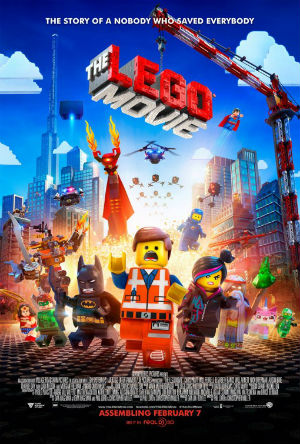 |
Like most people who went to see The LEGO Movie, I walked out of the theater shocked at how far the movie surpassed my expectations. I think most people would have been okay with a quick, disposable romp full of toy blocks. Instead Phil Lord and Christopher Miller delivered a twistedly brilliant, mind bending burst of awesomeness that will be talked about for the rest of 2014 and beyond. It’s hard to think about everything that this film got right and not immediately think of half a dozen other movies that could benefit from similar good decisions. Anyone familiar with the current state of bottom line oriented studio mentality will have such optimistic hopes dashed rather quickly.
To talk about the lessons that can be learned from this movie, I will of course have to talk about the plot of the movie. So BEWARE OF SPOILERS AHEAD! Seriously, if you haven’t seen The LEGO Movie, stop reading this, step away from your computer and get your ass to a theater pronto.
5A. The Lesson:
Cameos Are Best When Used Sparingly.
 |
One of the first things that’s noticeable about The LEGO Movie,even from its advertisements, is that it’s got a lot of Lego versions of pre-existing characters rounding out the cast. The reason this works is because most of these characters are quickly there and gone again. The movie’s plot doesn’t linger on its famous guest stars past the point of making a good joke and moving on.
A great example of this is the appearance of the Star Wars characters. They show up, a few quick jokes are made, they take off, one more joke is made and then they’re done being in the movie. Superman and Green Lantern show up on screen a few different times, but only long enough to do the running joke of “Superman is annoyed by Green Lantern’s fanboy behavior” and then they’re slipping off camera again.
This is something that could improve a lot of movies. I haven’t seen the new version of Robocop yet, but I’m pretty sure it could benefit from a quick glimpse of Johnny Number 5 from Short Circuit without turning him into a central character.
5B. The Misunderstanding:
Reference All the Things!
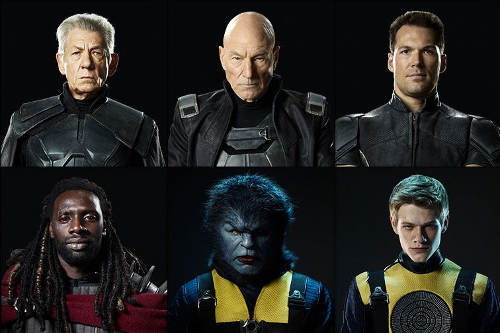 |
The misuse of cameos is something that studios have been doing for awhile, and will likely continue to do. The LEGO Movie doing it so well will likely be misread as a need to do even more of it. The genre where cameos are most often mangled is superhero movies. Fox has been especially irritating with shoe-horning waaay too many characters into their X-Men movies. There’s a brief TV clip in X-Men 2 showing an interview with a normal looking guy named Hank McCoy, which becomes a bit puzzling when Kelsey Grammer shows up all blue and furry in the third movie. Each of the first three movies had a different actor in the role of Kitty Pryde, even though she’s only an important and memorable character in the third film.
The trend seems likely to continue into the foreseeable future. X-Men: Days of Future Past has crammed in so many mutants that Anna Paquin’s one scene as Rogue is rumored to have been cut from the movie. A character as important as Rogue should not be in only one scene of an X-Men movie to begin with, and if that scene is being cut to make more room for other mutants to be on screen that doesn’t bode well for the characters who remain in the movie being properly developed. Meanwhile, Amazing Spider-Man 2 is looking to have at least three villains introduced (Electro, The Rhino and The Green Goblin), with another two or three rumored to be popping up or hinted at in some way (The Vulture, Doc Ock and Venom).
The only guys who seem to know how to handle cameos in superhero movies are Marvel Studios,who have a good track record for not overdoing things. Some criticism was leveled at Iron Man 2 for spending a little too much of its screen time setting things up for The Avengers, but Marvel learned from that and have toned things down since. Having seemingly missed that memo, Warner Bros. are potentially turning the sequel to Man of Steel into “Justice League: The Prequel” with the number of characters rumored to be popping up (in addition to those already confirmed for the movie). Any concerns that too many ingredients are being added to the recipe can be countered with “Look how many characters we had in that Lego thing” while completely ignoring that of all the licensed characters on screen, only one of them played an integral role in the plot. Speaking of whom…
4A. The Lesson:
Batman Doesn’t Always Have to Be so Serious.
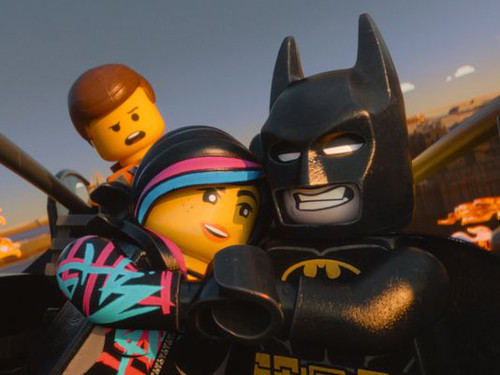 |
The reason that Batman works so well as a supporting character isn’t because he’s so cool, it’s because he’s so funny. His coolness is used as a source of humor along with his dark, brooding, loner attitude. This style of Batman is so fun to see because for most of the past decade he’s primarily been available in the gloomy and gritty persona displayed in Christopher Nolan’s films. While I love that trilogy, I’ve been ready for a different kind of Batman for a while now, and The LEGO Movie gave it to me. It’s the most fun I’ve had watching Batman since being late in the game on discovering how fun Batman The Brave and The Bold was…shortly before its untimely demise.
The Lego version of this character proves that there’s an audience willing to embrace a lighthearted version of the Dark Knight. That audience for has been around for quite awhile. For all the hate spewed towards the Joel Schumacher movies, they still made fuckloads of money and have their defenders. This decade feels like a good time for some new exploration of Batman and who he can be on the silver screen.
4B. The Misunderstanding:
More Batman Is Always a Good Thing!
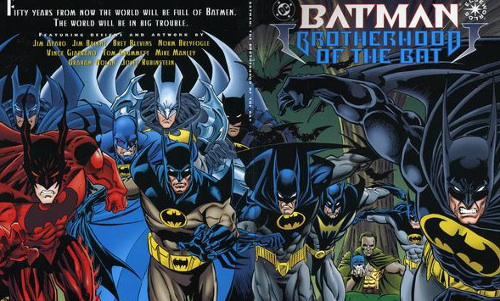 |
Unfortunately, the thing that Warner Bros. are likely to take away from this movie is that audiences want more of Batman no matter how they get him. As soon as Man of Steel ended up being a hit, but not as big of a hit as was hoped WB decided to fix things by going with their Perennial Plan B of “More Batman, because people love Batman”. The announcement of Ben Affleck taking over the role indicates the potential for taking the character in a new direction, but he’s being brought into a Superman story that’s already influenced by the “serious business” atmosphere of the Nolan movies.
As cool as it’d be to see Affleck bring a different kind of vibe to the Caped Crusader, it’d be a lot cooler to see WB focusing on some of the other superheroes that they have access to instead. They’ve got a whole universe of heroes to choose from, yet every other comic movie they do is focused on ol’ Bats. At some point, overexposure is likely to bite them in the ass. If the Man of Steel sequel disappoints them as much as the first one is believed to have, what solution will they come up with if they think Batman has failed?
3A. The Lesson:
You Can Make Fun of Something Without Looking Down on It.
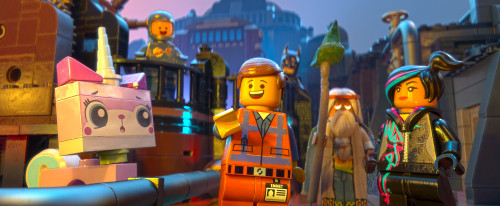 |
At its heart, The LEGO Movie is a comedic deconstruction of the Hero’s Journey, a.k.a. “stories about the chosen one of ancient prophecy”. The very idea of a prophesied hero is picked apart as being inherently goofy. At the same time, however, the film also celebrates the trope of a chosen hero struggling to overcome his own self doubt. The admission by Vitruvius that the prophecy was made up is countered by the declaration that being made up doesn’t invalidate it in anyway.
This “laughing with and not at” style of humor is also on display with the way that the movie handles its many guest stars. Everyone from Lando Calrissian to Dumbledore to Batman is getting hazed, but it’s the kind of razzing that can only come from a source of love. All the gags about Batman being so dark and edgy have an undertone of enjoying the dark edginess. This is the kind of humor that can be seen in classic Mel Brooks comedies and the early work of the Zucker Brothers, having a good laugh at something because you love it so much – even the bits that are kind of silly when you stop to think about it.
3B. The Misunderstanding:
Mockery Never Gets Old!
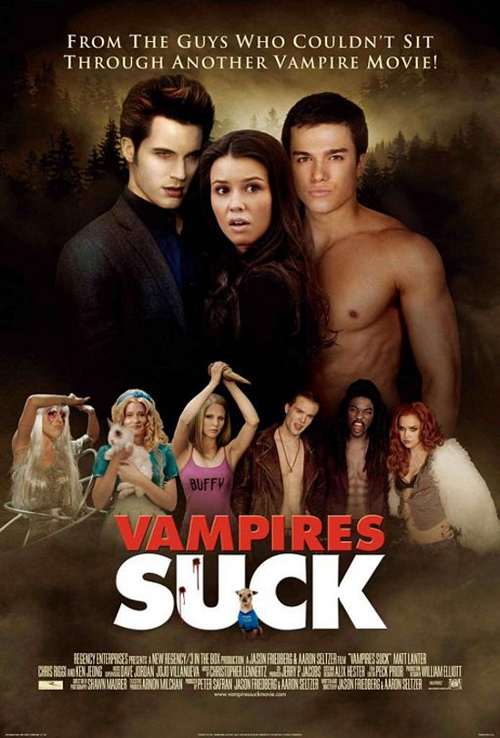 |
All of the love and fondness informing the humor of The LEGO Movie is likely to be overlooked by studios focusing too much on the use of humor instead of the intent. The last decade’s worth of comedic looks at various genres have mostly come from a place of perceived superiority that says “this movie is much better than the ones it’s making fun of because we realize this stuff is stupid.” Even in movies that aren’t specifically made as comedies, this disdain can show up. A good example of this is the “yellow spandex” gag from X-Men. The whole point of that joke is that the classic costumes from the X-Men comics are really lame and dumb.
This condescending, acidic form of humor is most prominent in the asinine parodies from Jason Friedberg and Aaron Seltzer. Even people who hate The Twilight Saga seem to have little interest in Vampires Suck, because it brings nothing to the table beyond saying “boy, Twilight sure is bad” over and over. It’s sad that Hollywood seems to have fallen into the trap of thinking parodies and spoofs have to be mean-spirited, because most of the rest of the comedy genre seems to come from a place of loving – or at least liking – the characters and situations being presented.
2A. The Lesson:
When Handled Properly, 90-Degree Plot Turns Can Pay Off Brilliantly.
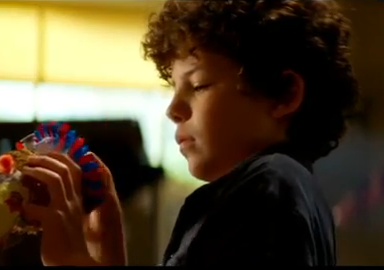 |
The biggest and most unexpected surprise to be found in The LEGO Movie is the revelation to Emmet that he and his companions, and indeed their whole universe, are literally play things to other beings. A good reason this twist is pulled off is because details are placed throughout the story building up to this huge event. Starting with Emmet’s vision when he touches the “piece of resistance,and continuing with Lord Business’ various artifacts such as a band-aid and an exacto knife, the clues make it intuitively obvious and completely necessary that we must eventually see a kid playing with the Lego toys we’ve been seeing on screen.
The finale being a confrontation between a boy and his dad over how to play with toys ends up being the best possible validation of everything the audience members both young and old love about the product enough to have come into the theater in the first place. By reminding the audience that toys are meant to be enjoyed, the movie knocks on the fourth wall without quite breaking it. It’s that delicate balancing act that results in the ending being a work of brilliance instead of joy killing blunder.
2B . The Misunderstanding:
Twist Endings Are Cool Again!
 |
For quite a few years it seems like Hollywood was obsessed with crazy plot twists. Back in 1999 The Sixth Sense and Fight Club did them so well that it felt like everyone else wanted to jump onto the bandwagon. Some of the movies that went with the trend used it to good results (The Others and Memento, for example) while other films were ruined by plot twists that felt like the result of screenwriters being unable to think of a proper ending (such as High Tension and Identity). For a while it seemed like every thriller or mystery movie coming up the pike was required to have some sort of big plot twist. Some movies even went for extra credit and tried to pile on multiple plot twists, resulting in breaking the story into nonsense (see Basic and Reindeer Games for demonstrations of how not to them).
Thankfully, this trend seems to have simmered down in recent years. Even the last few movies from M. Night Shyamalan are twistless affairs. But with The LEGO Movie having such a great and fitting twist, it’s not hard to imagine a bunch of studio execs thinking “Our movie needs something cool like that!” and sending some story-breaking notes to a director. All it might take is one more good movie this year blowing the minds of its audience, and studios could end up deciding that the twisty plot’s time has come around again. While this might result in a couple of clever movies that stand out as really smart, the number of potentially good movies rendered idiotic seems likely to be much higher.
1A. The Lesson:
Nearly Any Property Can Be Turned Into a Great Story if Done Right.
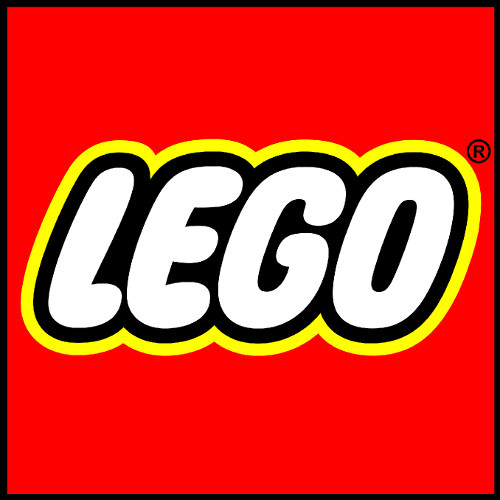 |
I’ll admit that, like a lot of people,my first reaction to the news that a movie was being based on Legos was cynical dismissal. The concept immediately sounded like a lazy cash grab for the nostalgia market. Instead, the team behind the movie took a close look at their subject and why people love it, then carefully crafted a tale centered around that love.
This is the most important lesson that other studios should study for translating something into a movie from another medium. While a comic book or a video game will usually have everything mapped out in terms of a story to be told, other things such as toys or board games aren’t as easy to figure out, but when someone takes the time to do so, it can lead to brilliant work being done. A great example of this is the 1985 cult classic Clue, which took the Parker Brothers board game and turned it into a dark, comedic murder mystery in the style of Agatha Christie. Director Jonathan Lynn and writer John Landis took the basic ingredients of a game about solving a murder and injected it with clever humor set to the backdrop of the McCarthy-era Red Scare. They even incorporated the game’s replayable nature by creating three different ending with distinctly separate answer to the question of whodunnit that each fit the facts presented on screen.
The three endings were screened in different theaters leaving audiences guessing which one was the “real” conclusion until the VHS version gave the final answer. It wasn’t appreciated so much at the time, but has gained much love since. There are a lot of properties floating around the world that could benefit from this kind of painstaking devotion to detail. Sadly, the level of care and regard that went into The LEGO Movie involves a lot of hard work and effort that Hollywood seems to prefer avoiding far too often.
1B. The Misunderstanding:
We Need More Toy Movies NOW!
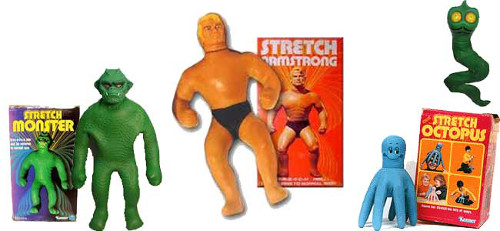 |
Just a few years ago, it seemed like every major studio had at least one film in development based on a board game or a classic kids toy. From Candy Land to the View-Master 3D, every kind of property with even the vaguest bit of potential for being put on the big screen was being tapped. That all changed when Battleship was released and sank at the box office. The updates about all those toy and board game movies stopped popping up on news sites and it seemed like Hollywood might have decided to look elsewhere for movie fodder.
Now that The LEGO Movie has spent two weeks dominating the box office, a lot of those shelved projects are probably being dusted off for a second chance. More than a few studio execs are probably thinking “If people’ll take their kids to a flick about building blocks, maybe this thing has a shot at raking in some cash.” as they flip through the pages of a screenplay about Stretch Armstrong or Risk and scribble out some notes about possible casting choices.
There’s some potential here for good or even great movies to emerge, but it’s not hard to see how easily things could take a wrong turn into a crapfest. For a good case in point just look at Monopoly. The game has a distinct and enduring visual style that would look great on screen as a cartoon in traditional hand-drawn or even modern CG methods. It’d take a lot more hard work, but that style could also be adapted to live action with wonderful results. The story itself could take so many different paths, exploring topics like the widening divide between rich and poor, the struggle of greed and altruism, the nature of capitalism or the personal cost of pursuing wealth to name a few. Sadly, an interview with with screenwriter Frank Beddor in 2009 indicates that the move was being set up as a Jumanji knockoff.
It might be too much to hope that movies yet to be made will take advantage of the example set by The LEGO Movie, but the film proves that so many of the other properties in development could be something truly special… which will make it all the more disappointing in the likely event that they aren’t.
Previously by Greggory Basore on Topless Robot
TR’s 10 Best Comics Read in 2013
16 Heartbreakingly Awesome Bits of Production Art that Never Made it to the Screen
